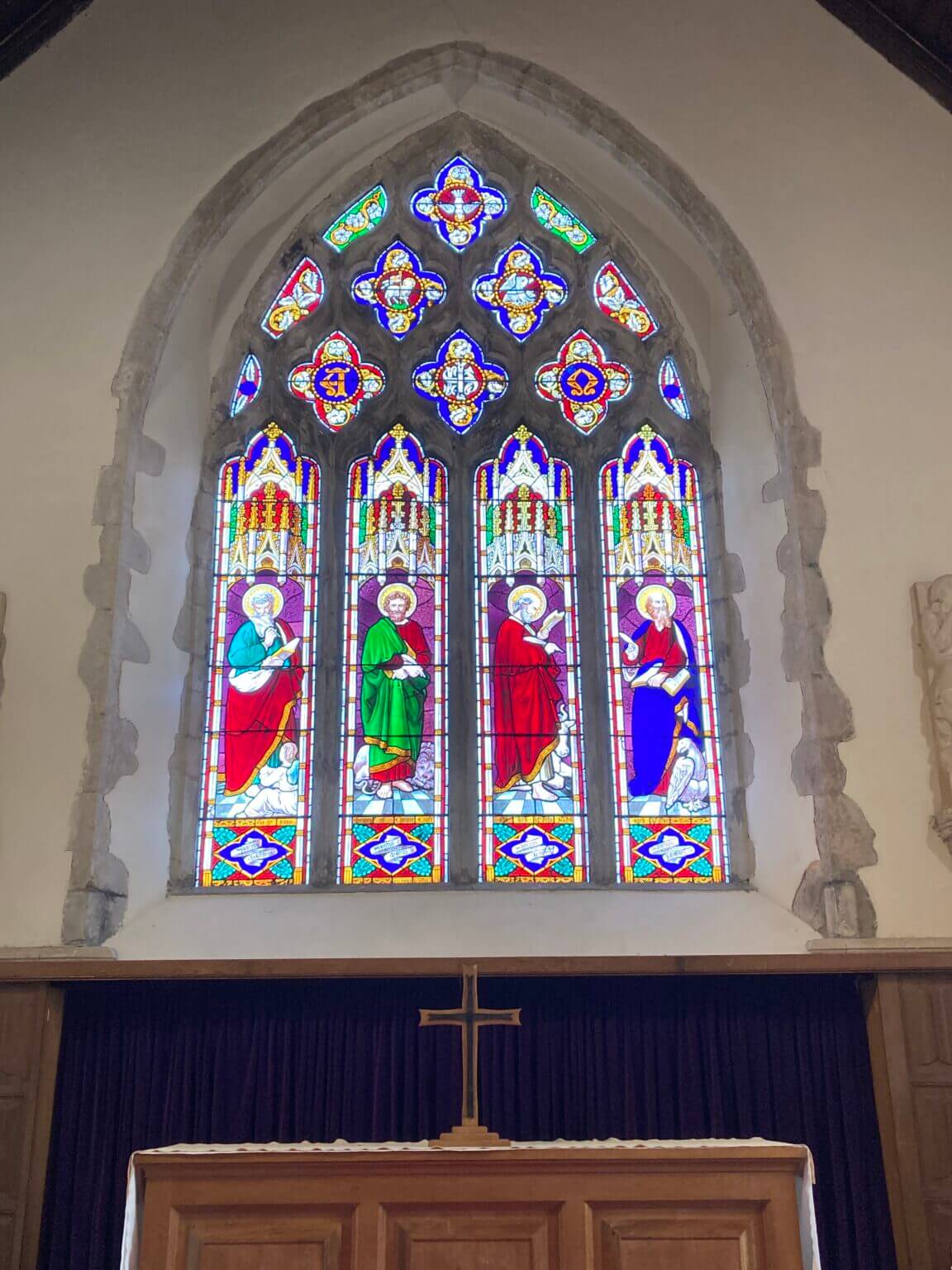A Guide to Saltwood Church
Approached along Rectory lane, the church sits in an idyllic, quintessentially English location.
Rectory Lane contains three rectories: Saltwood House, parts of which date back to the twelfth century; The Old Rectory; and The Rectory, inhabited by the current Rector.
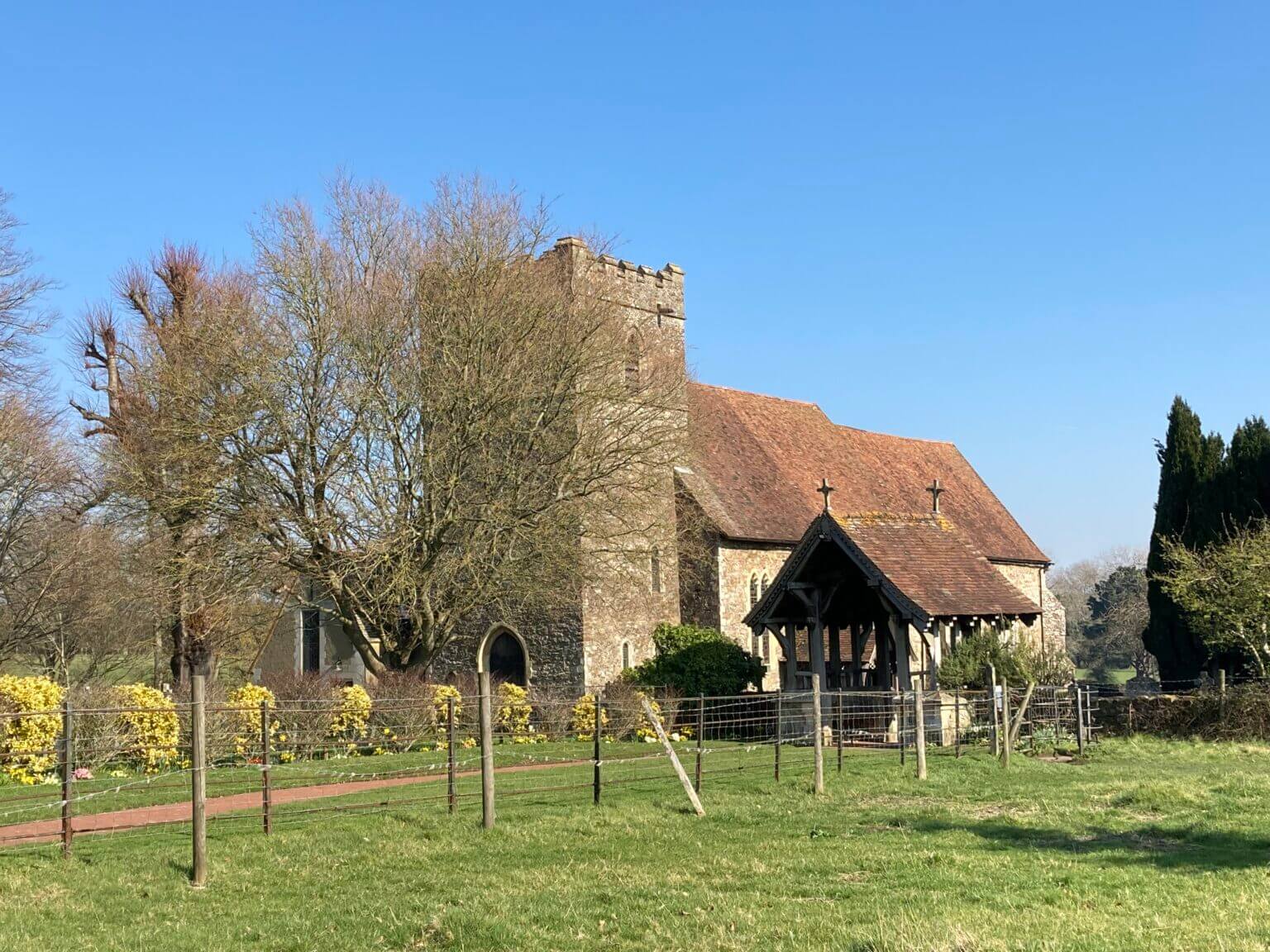
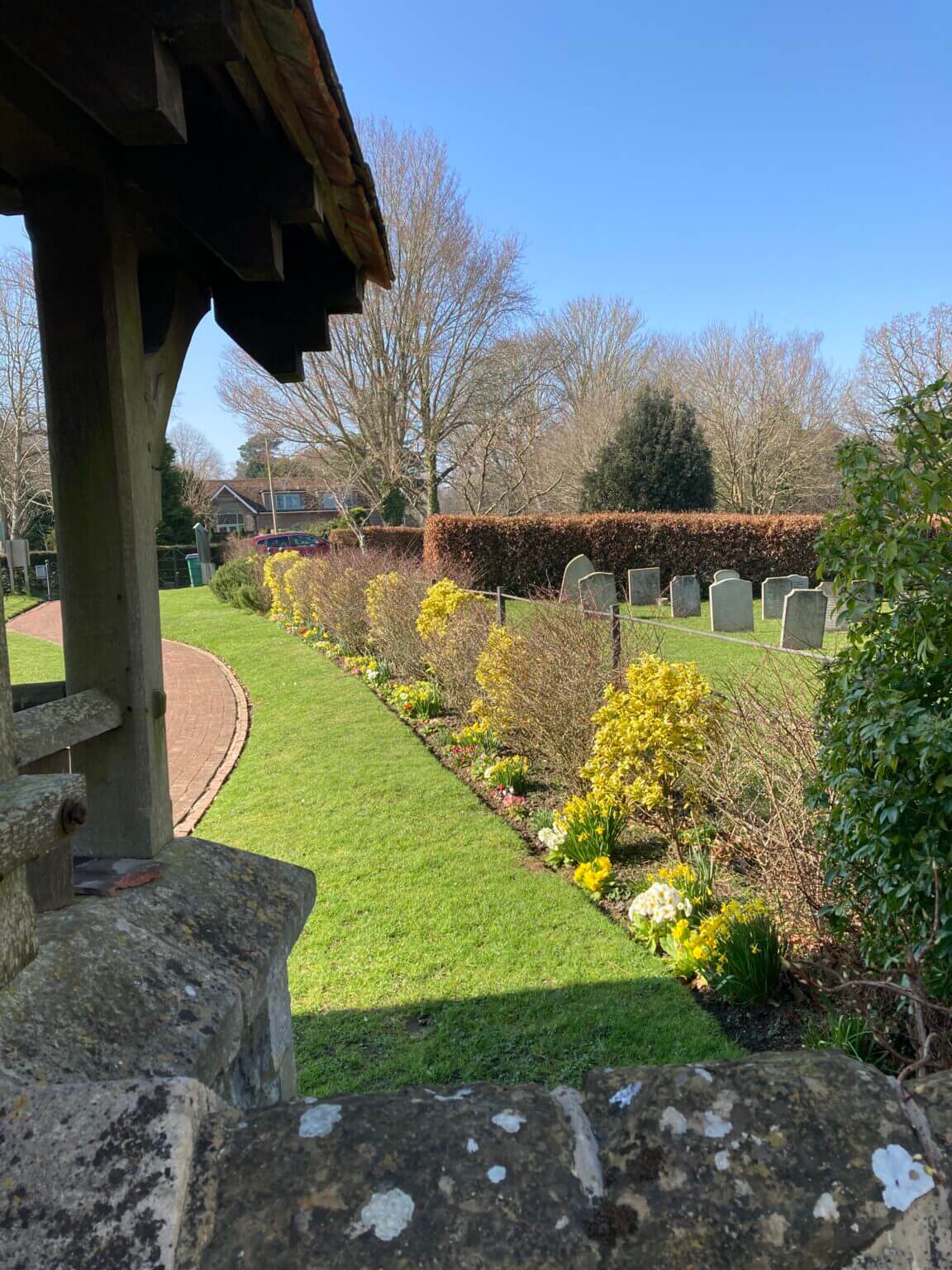
Before entering the church building, any visitor will notice the immaculate churchyard, which is lovingly tended each Wednesday morning by the ‘Churchyard Gang’ volunteers.
Our thanks go to all of them! Any further offers of help – both practical or financial – will be much appreciated.
The lych gate, where once the bearers waited with a coffin until mourners were in place, has the inscription ‘ Through the grave and gate of death’ on the West side, and ‘The house of God the gate of heaven’ on the East side. Repaired after the hurricane of 1987, it was originally constructed in 1888, in memory of John Deedes and George Deedes, of Saltwood Castle.

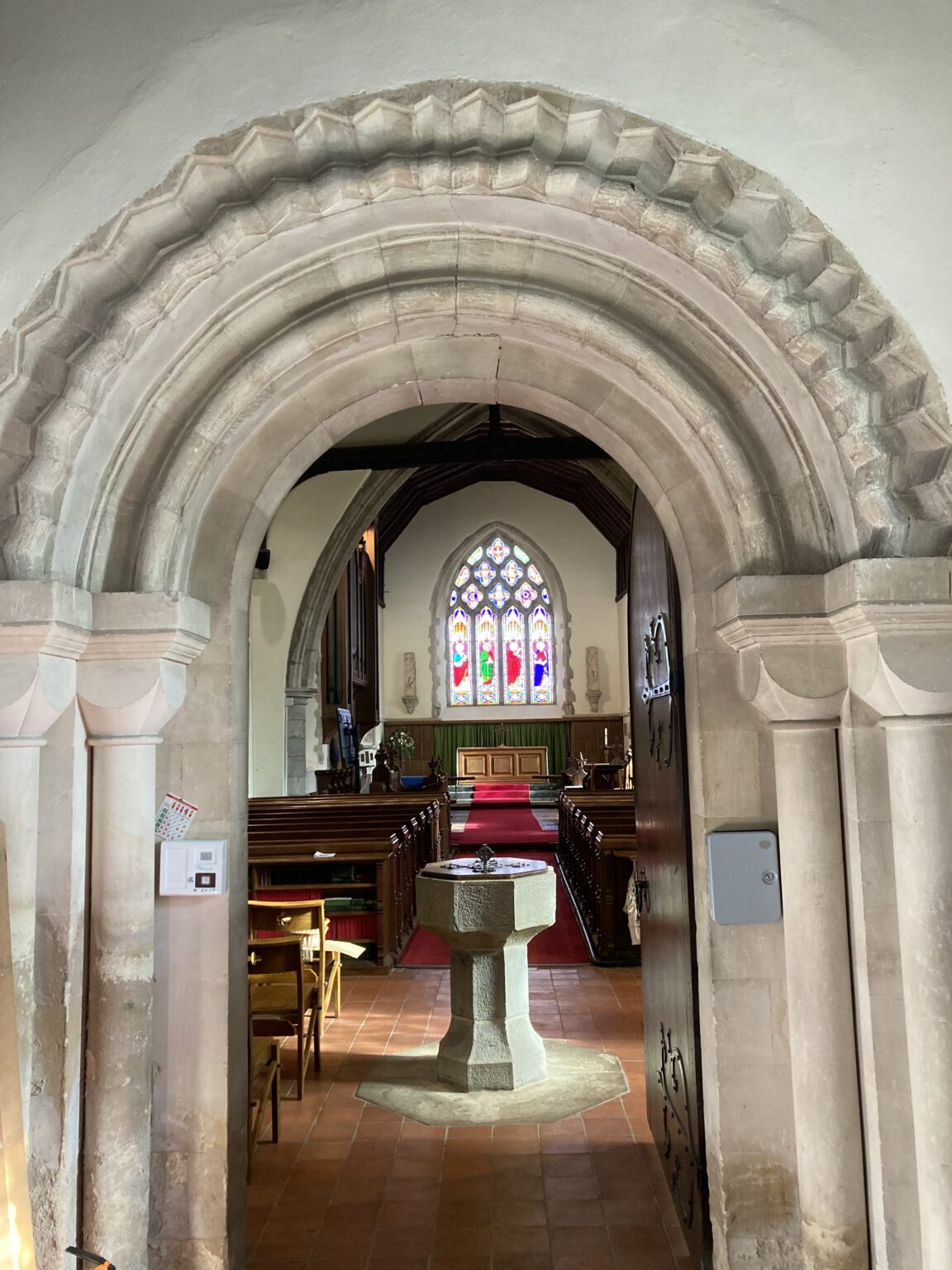
The oldest, Norman part of the church would have consisted of the Nave, with a small chancel. The door from the current vestry at the base of the Tower would have been the main West door, and the beautiful Norman arch is still visible on the Vestry side.
In the thirteenth century, the North aisle was added or extended, and the Tower was built. This now houses six bells, five of which date to the 1720s, with the final bell added in 1912. They were originally rung from ground level, until another turret housing a staircase to the first floor was constructed in 1847.
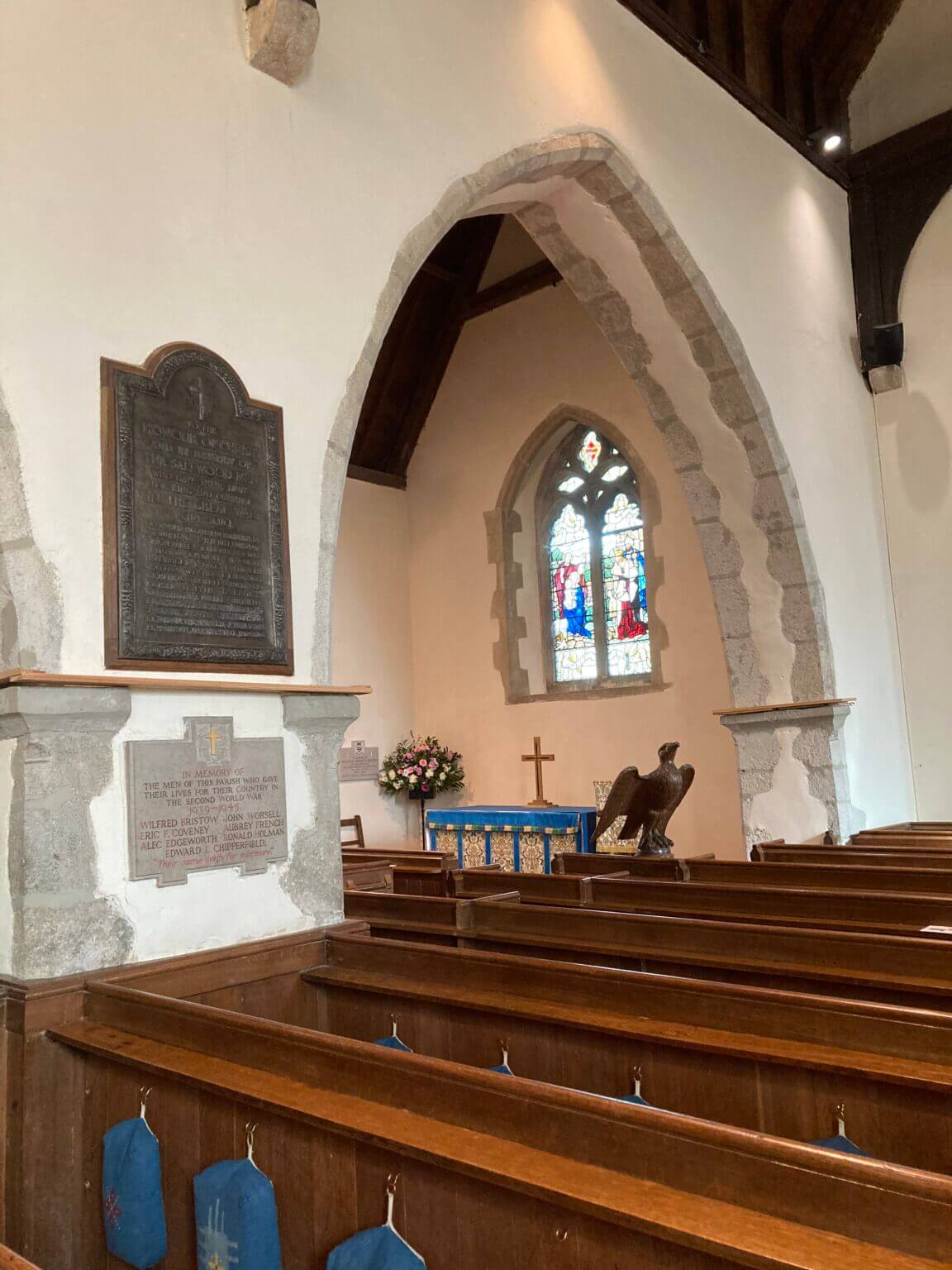

On the south wall of the sanctuary is a fine example of a 14th century piscina. A piscina is a water drain for the disposal of water used for the washing of communion vessels.
The Saltwood piscina is decorated with the carved heads of a king and queen. There is debate as to whether these are Edward I with Queen Eleanor (or maybe Queen Margaret); Edward II and Queen Isabella; or Edward III and Queen Philippa. The choice is yours!
The font is 16th century, with a Victorian cover.
Throughout the centuries, Saltwood church has been well maintained, with much ‘refurbishment’ in Victorian times, followed by the addition of a kitchen, toilets and meeting room in the late 20th century.
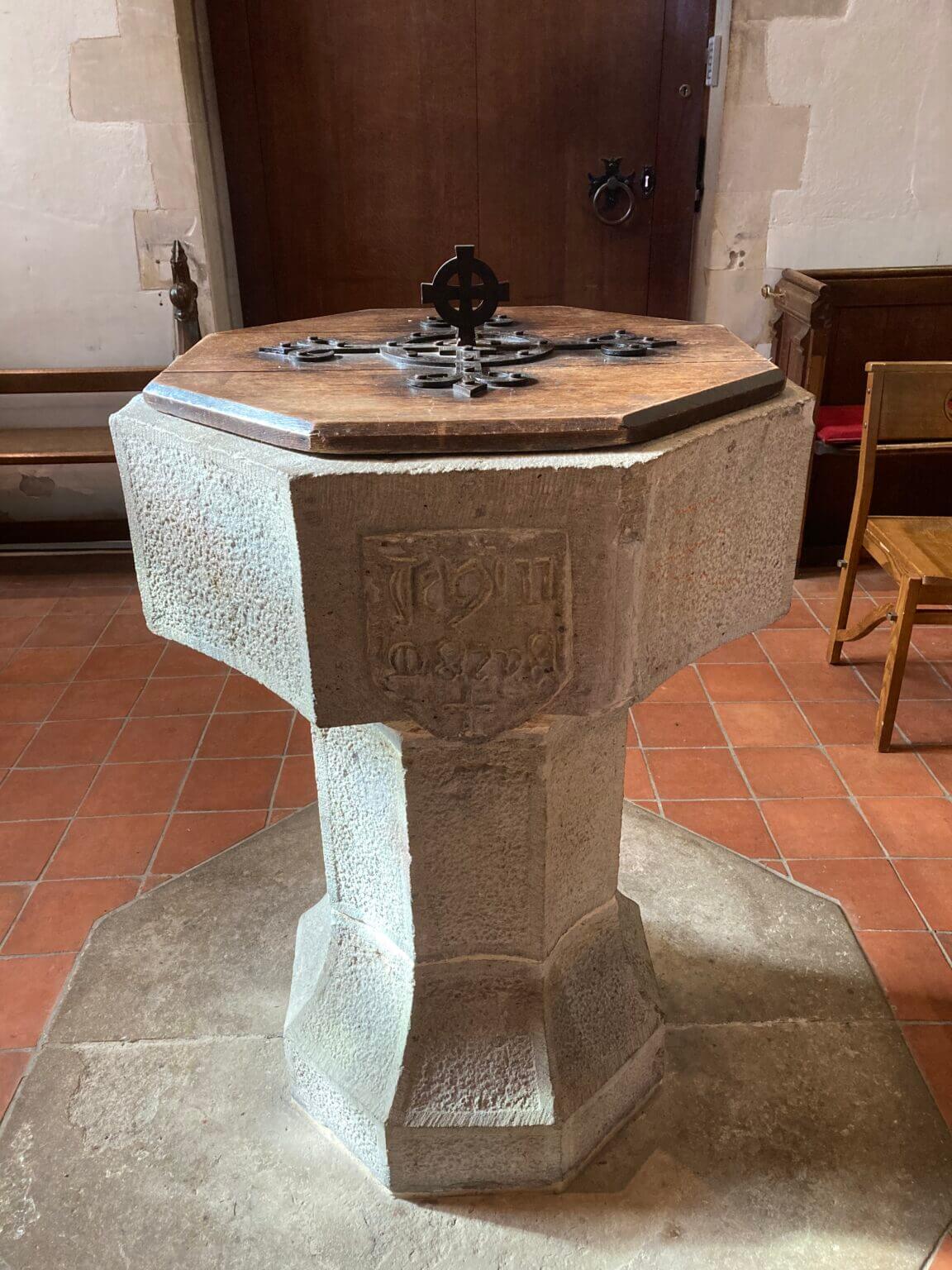
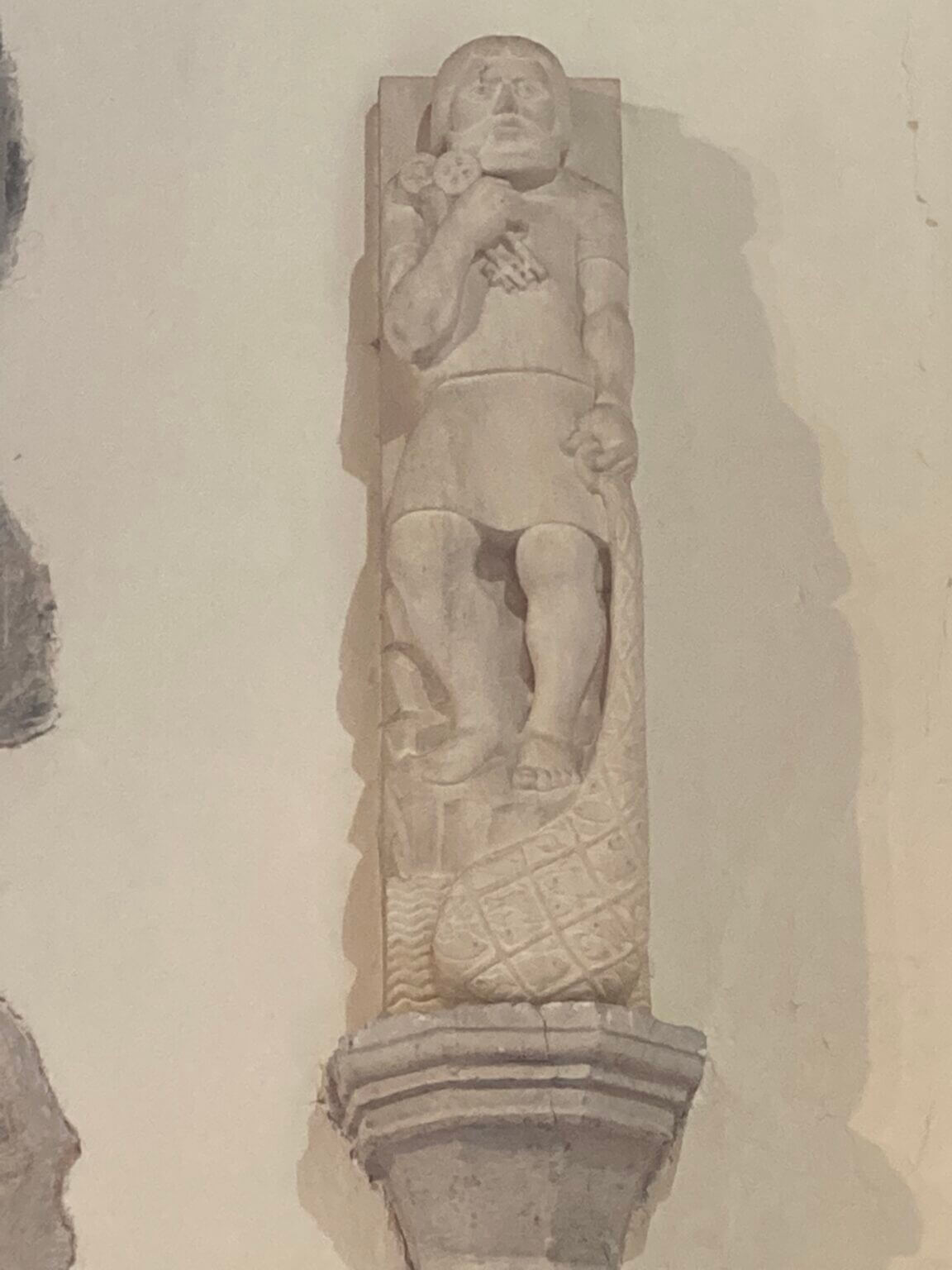
Standing on medieval plinths on the wall behind the High Altar are the ‘Millennium Figures’, by sculptor Duncan Scott, representing St Peter ,holding a fishing net and set of keys …
… and St Paul, holding the epistles, and shaking off a snake. (Acts 28.5)
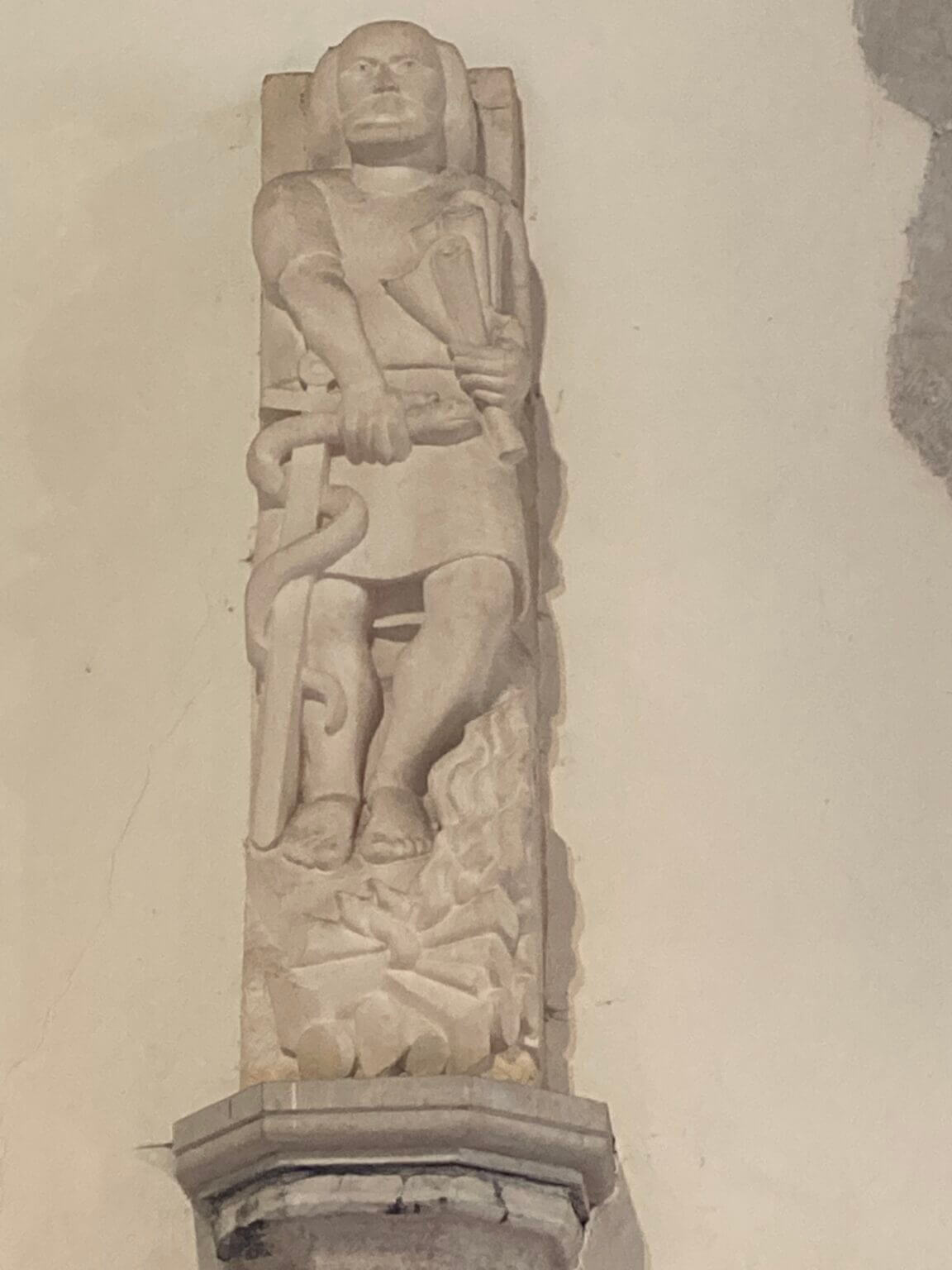
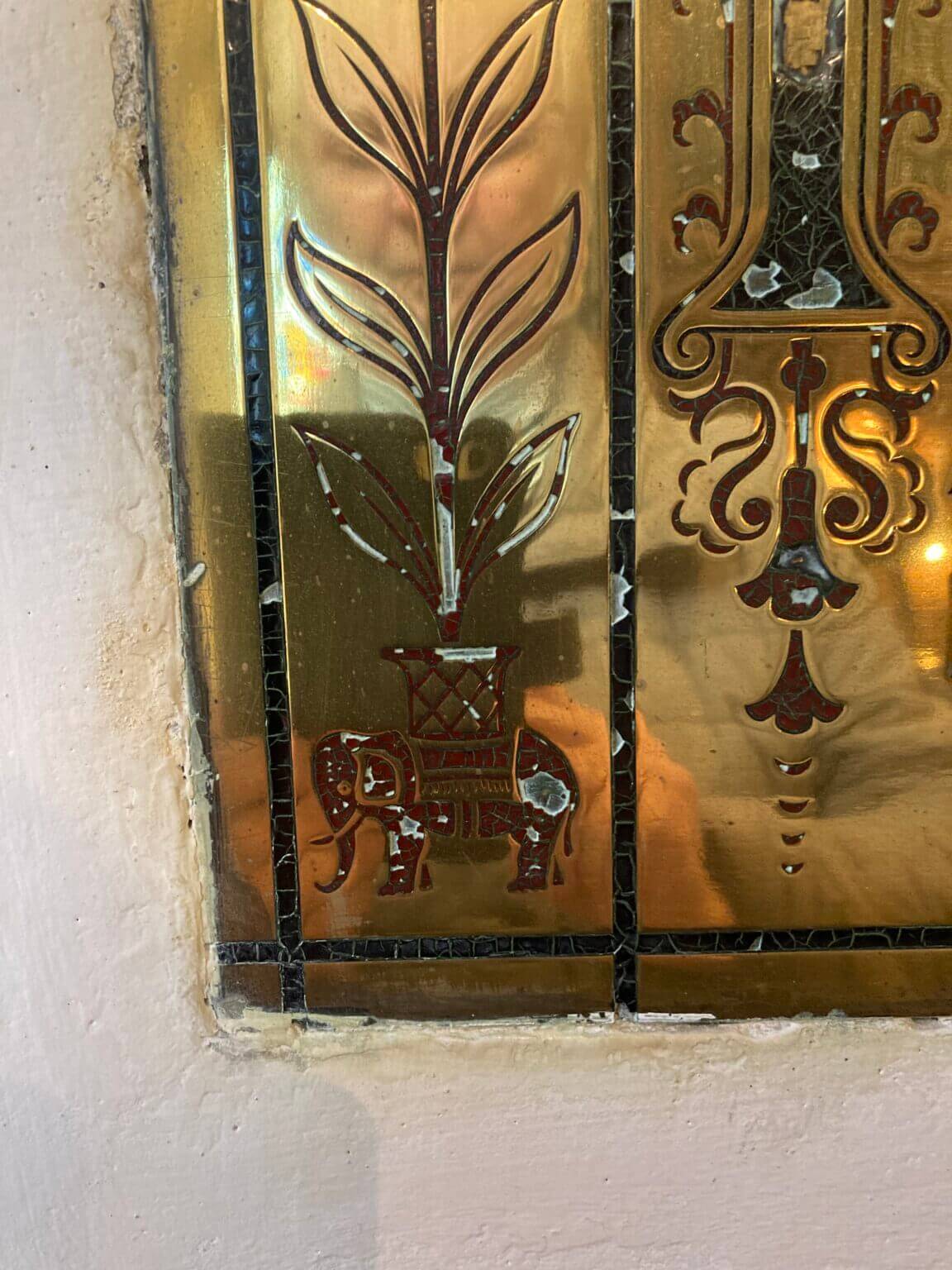
There is plenty more to see in our ancient and beautiful church building: many stained glass windows, a war memorial plaque, a painting of William IV’s Royal Coat of Arms, interesting carvings and brasses… you may even find an elephant or two!
You are always welcome to enjoy the peace this building and its churchyard can offer – and will also receive a warm welcome at any service held here.
